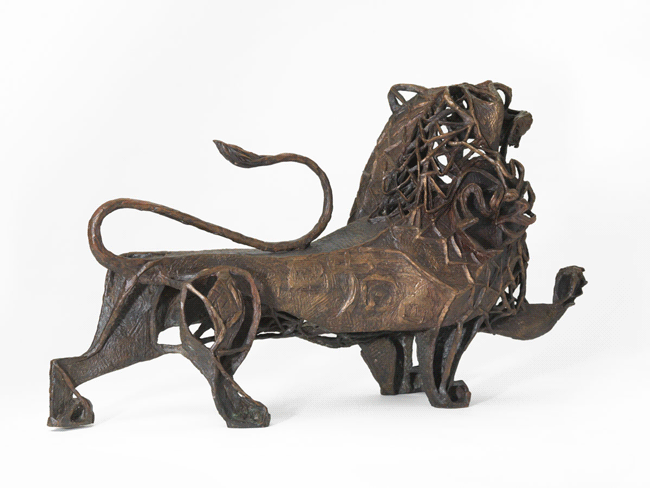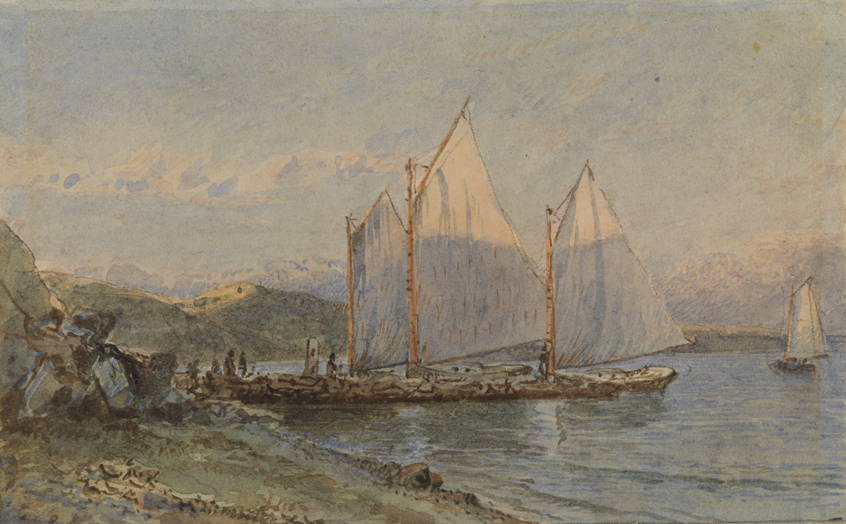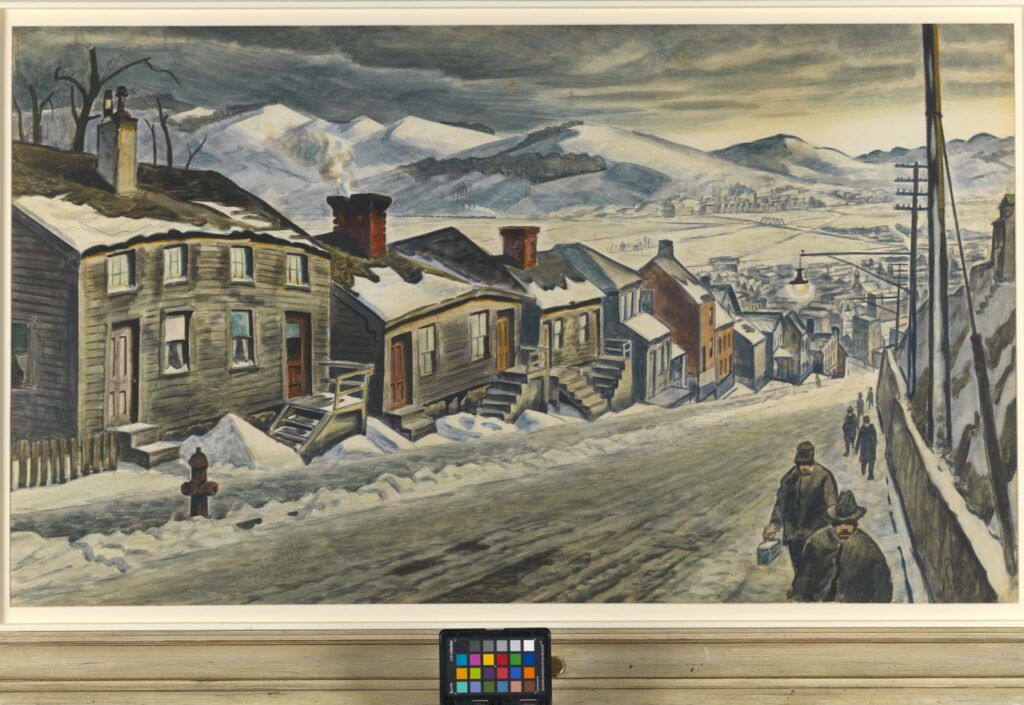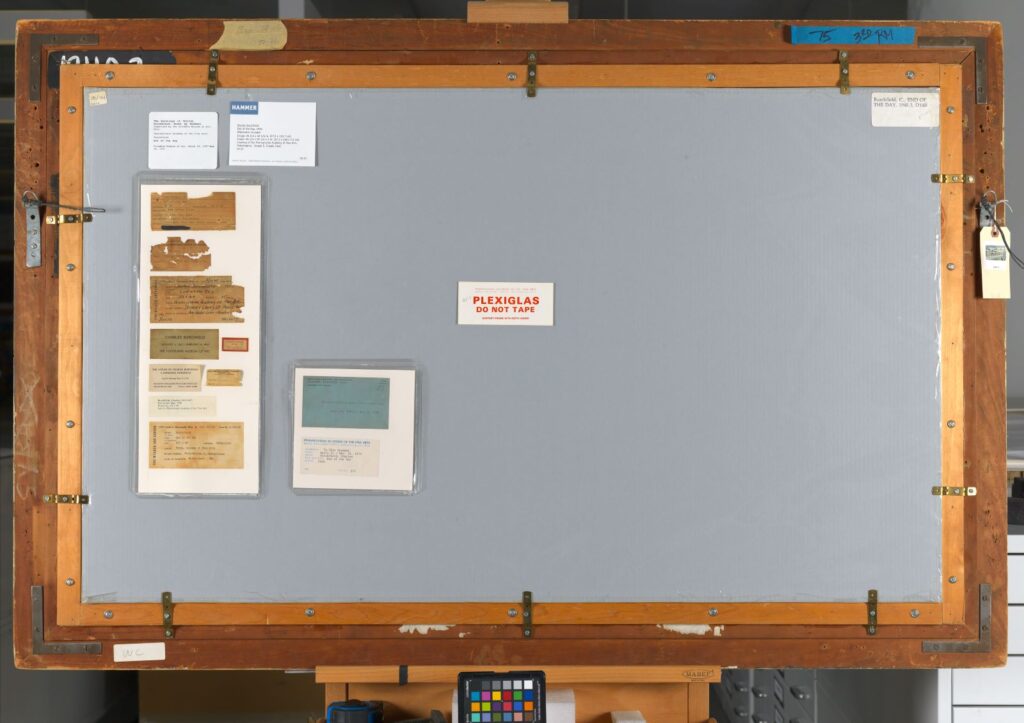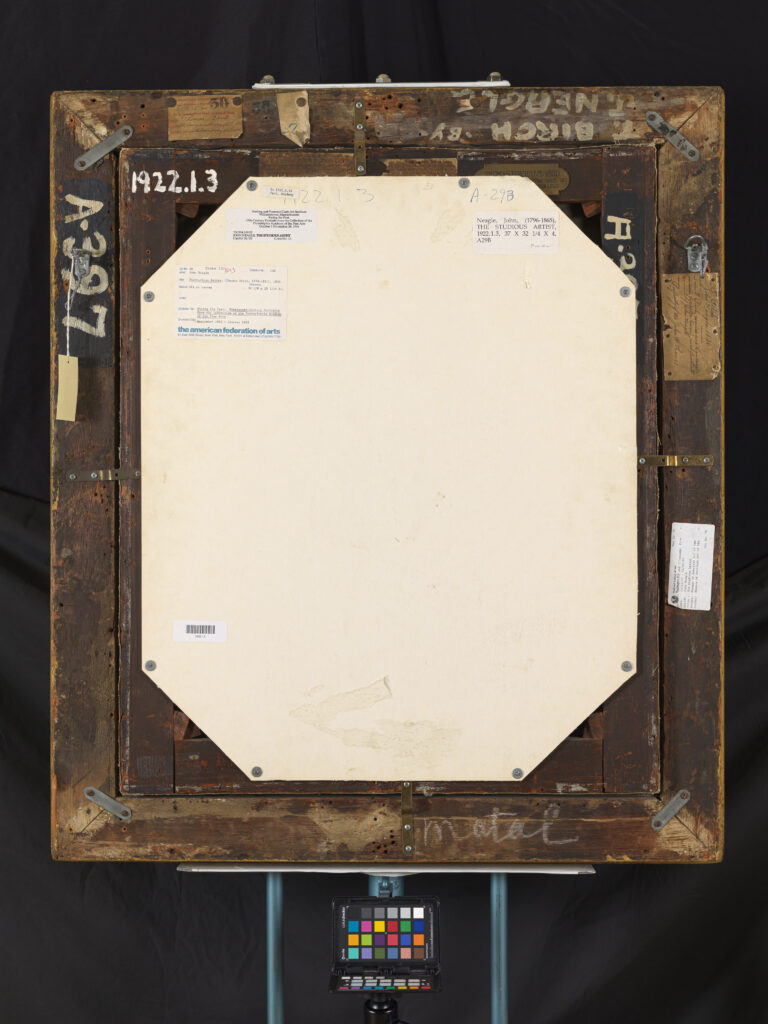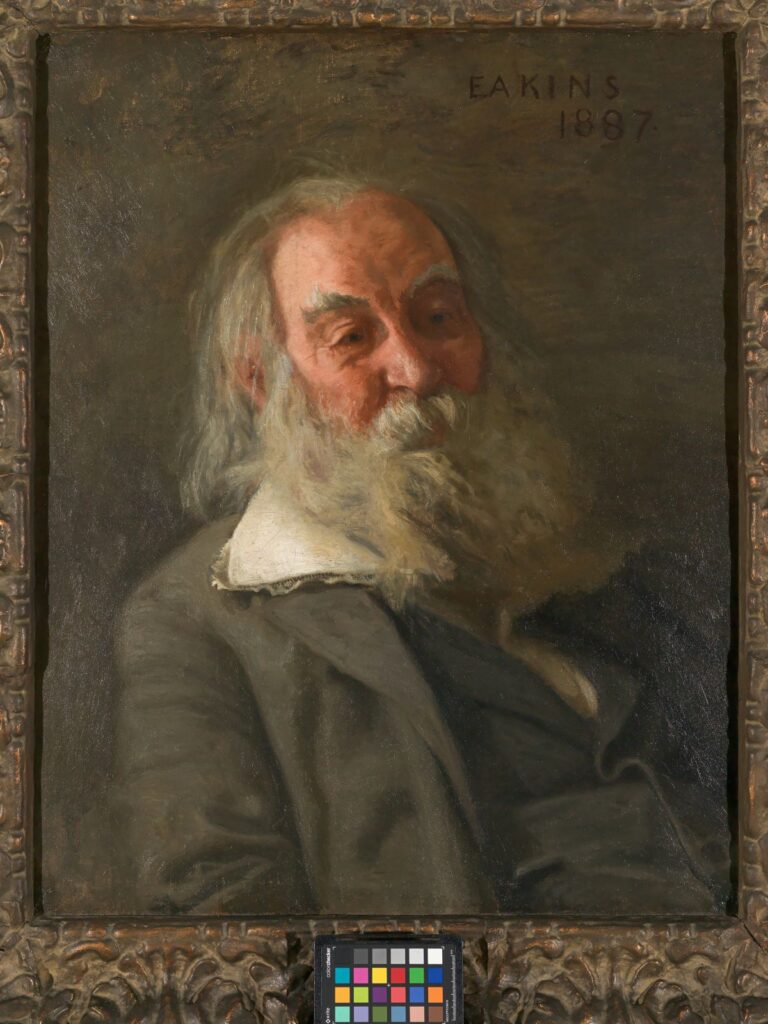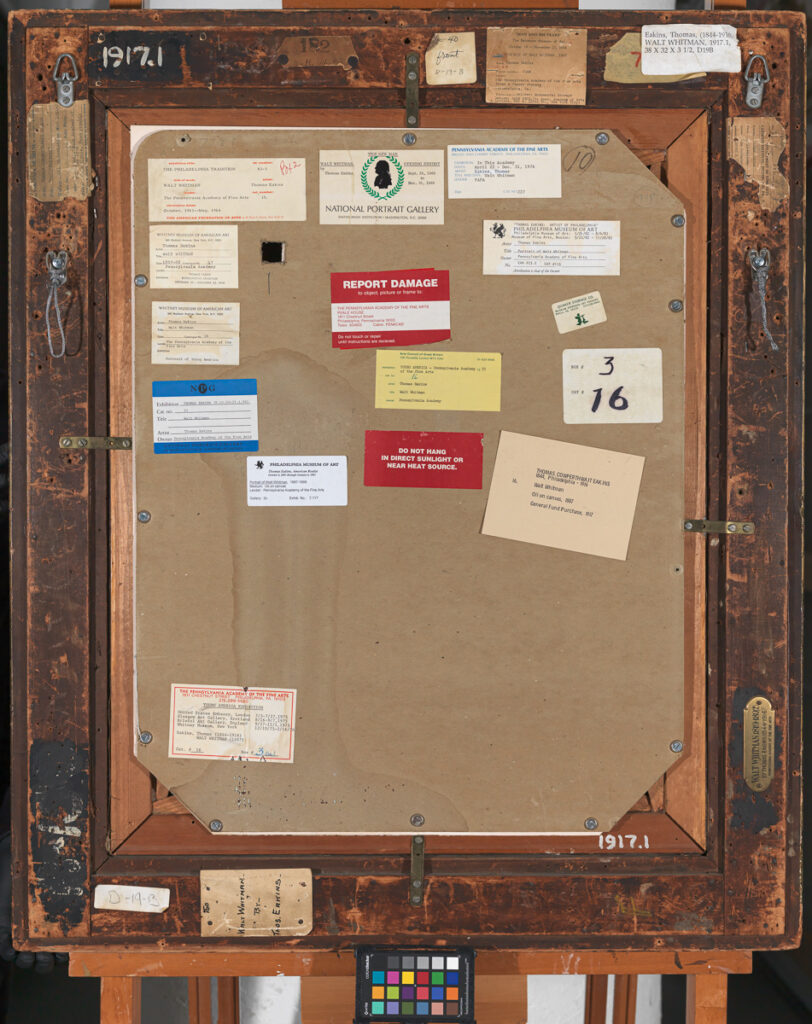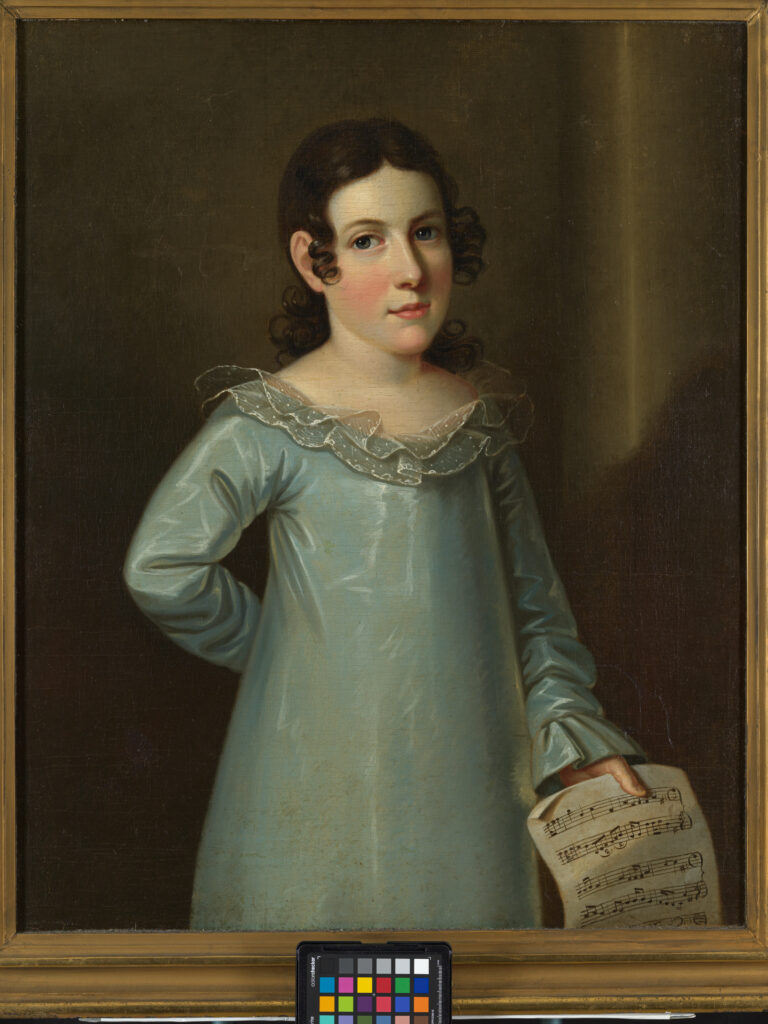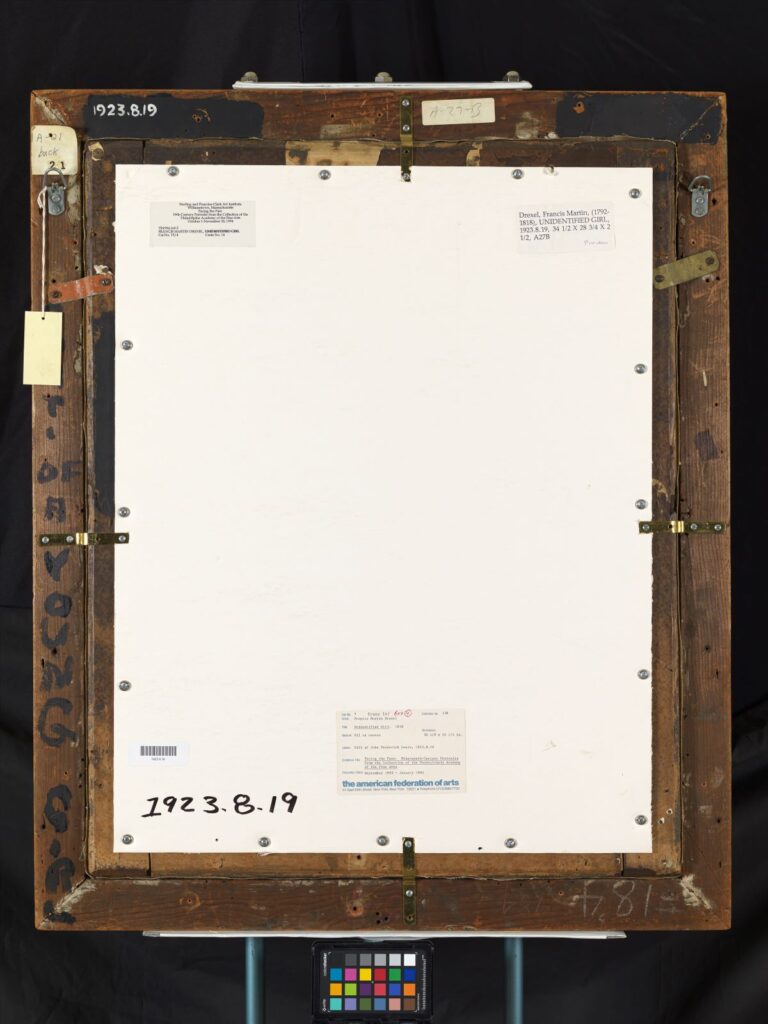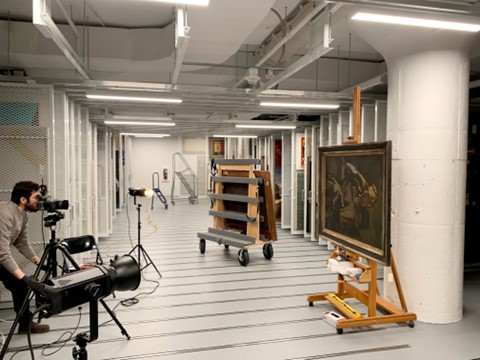Contribute by Zoe Smith, Project Museum Collections Assistant
This week at PAFA we continued photographing sculptures as a part of the IMLS grant. While some 3D objects are straight forward, the beautiful sculpture Naima by Elizabeth Catlett was quite the challenge to photograph. I had so much fun creating the set up for this piece. We started using the light box that we have been using for smaller pieces, but because this sculpture is so reflective, we could see everything surrounding the object. We had to get creative and use the structure of the lightbox but switch the reflective sides to diffusion material. Our light source needed to be bigger than the object we were photographing and needed to seamlessly surround it. We had to combine multiple pieces of fabric to surround the work, and then we were able to use two soft boxes to get a beautiful quality of light. This piece has been one of my favorites to photograph so far, and I had a great time working with the photographer Adrian Cubillas to figure it out.

About the Institute of Museum and Library Services
The Institute of Museum and Library Services is the primary source of federal support for the nation’s libraries and museums. We advance, support, and empower America’s museums, libraries, and related organizations through grantmaking, research, and policy development. Our vision is a nation where museums and libraries work together to transform the lives of individuals and communities. To learn more, visit https://www.imls.gov/and follow us on Facebook and Twitter.


